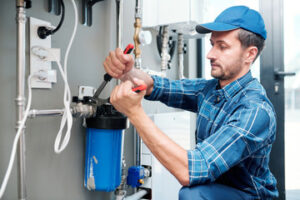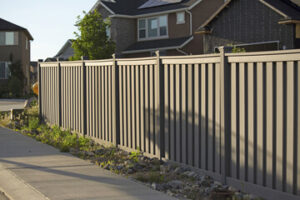Commercial electrical service plays a vital role in ensuring that your business is fully functional and safe. It includes everything from lighting design to wiring services, security systems, HVAC integration, and more.

Commercial buildings have increased power demands than residential properties, so they need specialized equipment and wiring. Understanding the different types of commercial wiring and following installation processes and safety regulations is essential for a successful project. Visit https://www.nashelectricnc.com/ to learn more.
A commercial electrical panel upgrade is an essential service for enhancing a building’s safety and functionality. A properly functioning panel ensures an uninterrupted power supply, enhances energy efficiency and supports compatibility with modern technological equipment. Several indicators suggest that an electrical panel needs to be replaced, including frequent breaker trips and dimming or flickering lights.
Upgrading your electrical panel can also be a smart investment in the future of your property. If you’re planning to undertake a major renovation project or are looking to add high-powered appliances, the existing panel may not be capable of handling the additional demand. Upgrading the panel to accommodate your current and future power needs will keep your home safe and prevent costly repairs in the future.
A professional commercial electrician will help you understand your options for upgrading your electrical panel and breakers to best fit your property’s power demands. They will provide a detailed schematic of your new system and will fully explain all switches and functions. They will also obtain the necessary permits and schedule inspections to ensure that your installation meets local regulations.
Updating your electrical panel will also protect your property from future issues, such as overheated wires. A faulty panel can cause fires and can damage your appliances, leading to expensive repairs. A commercial electrician will inspect the condition of your electrical panel and ensure that all connections are secure to avoid any issues.
Moreover, an upgraded electrical panel can also be a selling point for your property, especially when you’re ready to sell. Buyers prioritize move-in ready homes that have minimal future upgrades to complete. A professionally upgraded electrical panel will also reduce the amount of time that you’ll spend on maintenance after a sale, facilitating a quick and hassle-free transaction.
Upgrading your electrical panel is an easy process, requiring only a few hours to complete. It involves shutting off the power to your home, installing a new breaker panel and transferring any existing circuits from the old one. A licensed and experienced commercial electrician will handle the entire process, ensuring that all work is done safely and in accordance with local regulations. In addition, they will offer comprehensive warranties on all their work and ensure that the job is complete to your satisfaction.
Energy Management Software
Energy management software is a critical tool for organizations looking to reduce energy costs, improve operational efficiency, and meet sustainability goals. It is crucial to choose the right solution for your business by conducting thorough research and considering scalability and customization options. This guide will help you select an EMS that is the best fit for your organization.
The first step is to determine what your primary objectives are. Your goals could be to lower operational costs, comply with regulatory requirements, or achieve sustainability targets. Then, use this information to identify the features and capabilities you require from an EMS.
For example, you may want to choose an EMS that offers real-time monitoring so that you can detect and react to energy usage anomalies quickly. Some solutions also include data analytics tools to provide insights into energy consumption trends and predict future patterns. You will want to ensure that the system is user-friendly and provides responsive customer support in case you run into any issues.
Another option is to opt for a simple EMS that offers pre-built functionality and can be deployed rapidly. This is a good choice for small businesses with limited budgets or a single facility. However, you should note that these systems have fewer features than a more advanced solution.
Finally, you can go for an EMS with open-source software that provides access to the code and allows for customization. This is a good option for technical teams with extensive knowledge of energy management software.
Regardless of the type of EMS you choose, make sure to consider the level of security that it offers. You will be dealing with sensitive utility data, so it is important to look for a system that protects this information with the highest standards of encryption and other safeguards.
Many EMS platforms offer a variety of reporting functions, such as weekly energy reports that can be automatically emailed to stakeholders. They can also automate the submission of ENERGY STAR building data and maintain monthly numbers to ensure that you remain eligible for certification. In addition, some EMS can even control and optimize DERs to maximize renewable energy production, storage, and utilization.
Safety Inspections
In addition to ensuring that properties meet professional codes, safety inspections can also highlight areas where upgrades are needed. Identifying and correcting electrical safety hazards before they become a risk to occupants saves money and creates a safe environment.
Safety inspections can help you comply with your state’s requirements for property insurance and ensure that your facility is in compliance with federal regulations. Additionally, identifying and fixing problems during the construction phase can reduce future repair costs by eliminating the need to redo work after construction is complete.
During an inspection, a licensed electrician will check the electrical wiring for exposed or improperly terminated connections that could cause fires or equipment damage. They will also examine the circuit breaker and electrical panel for signs of corrosion or damage, proper labeling, and adequate sizing to handle current loads.
Inspectors will also examine outlets and switches to make sure that they are grounded and plugged in properly, which prevents electric shocks. Moreover, they will verify that the grounding system adequately discharges excess electrical energy to protect against shocks and fires.
Frequent breaker trips, dimming lights, or burning odors are all indicators that the electrical system needs to be upgraded. These issues can disrupt workflows, distract employees, and lead to costly downtime. A professional electrical safety inspection can identify and resolve these concerns promptly.
Electrical safety inspections are particularly important for commercial and rental properties. During these inspections, the electrician will assess the electrical system for potential hazards and recommend repairs as necessary. This can include rewiring or adding new outlets, rerouting conduits, and replacing defective components. These upgrades can improve overall system efficiency and increase the value of the property.
Safety inspections can help you comply with your city or state’s regulations for property insurance, and they can also enhance the value of your home or business by making it more attractive to potential buyers. The expert technicians at Globe Electrical Solutions are available to perform a comprehensive safety inspection for your property at an affordable rate. Contact us today to schedule an appointment.
Preventative Maintenance
A facility’s electrical system is a critical component of operations. When a piece of equipment malfunctions, it can cause significant disruption and lead to expensive repairs or even total facility shutdown. Preventative maintenance aims to address potential issues before they turn into bigger problems that require costly repairs or lengthy downtime.
Unlike residential wiring, commercial wiring is held to higher codes and standards. It also tends to be more complex, involving multiple conductors and more components than residential wires. Additionally, it is usually covered by a special sheath or conduit.
Commercial electricians can ensure that a power distribution system is up to code and ready for the demands of a business. They can provide services like panel upgrades, new installations, and circuit breaker repairs that help reduce energy costs by providing efficient load distribution.
In addition, they can also offer electrical safety inspections and installation of GFCI outlets for extra electrical protection. These safety measures can help minimize workplace incidents and WCB claims. They can also increase productivity and improve employee morale by reducing the amount of time that employees spend waiting for an essential machine to restart.
Keeping up with preventative maintenance can also help reduce overall costs. Repairs and replacements for faulty equipment can be very expensive, especially when you factor in the cost of lost revenue while your facility is shut down. By performing regular inspections and routine maintenance, you can expect to spend less on energy, equipment repair, and other operational expenses.
Many facilities utilize smart technology to monitor energy usage and make data-driven decisions on where savings can be made. Commercial electricians can install meters and other energy management systems to help a property manager reduce electricity costs and make the most of their infrastructure investments.
Faulty electrical equipment is more than an inconvenience; it can also be a liability issue that exposes your business to lawsuits and damages. It’s important to work with a trusted commercial electrical service provider that offers preventative maintenance, inspections, and other electrical services.








